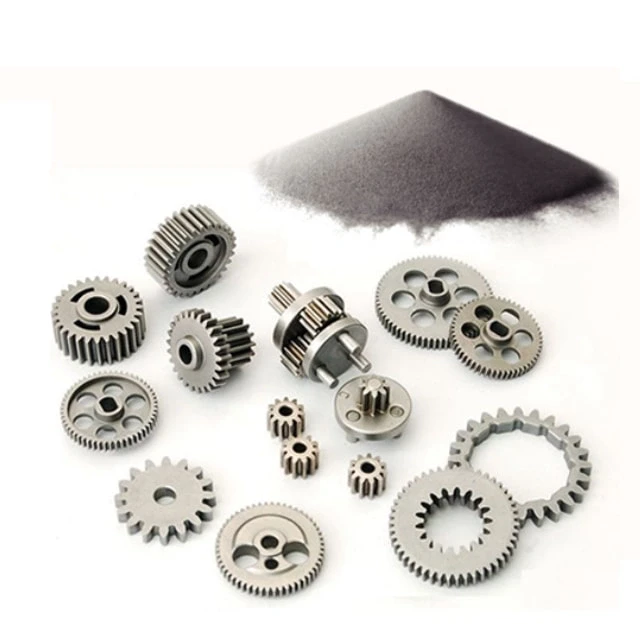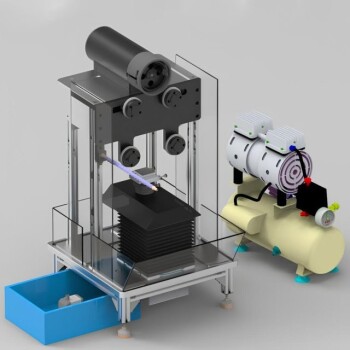Definition and Overview of Isostatic Pressing
Table of Contents
Concept of Isostatic pressing in powder metallurgy
Isostatic pressing is a powder processing technique that uses fluid pressure to compact the part. It involves placing metal powders in a flexible container, which acts as the mold for the part. Fluid pressure is then exerted over the entire outside surface of the container, causing it to press and form the powder into the desired geometry. Unlike other processes that exert forces on the powder through an axis, isostatic pressing applies pressure from all directions.
The all-around pressure exerted by the fluid during isostatic pressing ensures uniform compaction of the powder and uniform density within the compacted part. This is particularly important for parts with complex shapes or large dimensions. Conventional processing methods often result in density variations within the compact, but isostatic pressing overcomes this issue.

Effects of Isostatic pressing on powder compact
Isostatic pressing offers several advantages over conventional metallurgical techniques. It allows for the production of larger parts with high thickness to diameter ratios or superior material properties. The process can achieve high and uniform density without the need for lubricants. This makes it suitable for difficult-to-compact and expensive materials such as superalloys, titanium, tool steels, stainless steel, and beryllium.
Moreover, isostatic pressing removes many of the constraints that limit the geometry of parts compacted using rigid dies. It enables the formation of product shapes to precise tolerances, reducing the need for costly machining. This has been a driving force for the commercial development of isostatic pressing.
Overall, isostatic pressing is a versatile and effective technique used in various industries, including ceramics, metals, composites, plastics, and carbon. It offers unique benefits for achieving high-density compaction and precise shaping of powder materials.
Cold Isostatic Pressing (CIP)
Description and function of Cold Isostatic Pressing
Cold Isostatic Pressing (CIP) is a material processing method used to shape and compact powders into components of varying sizes and shapes. It involves compressing powders by enclosing them in an elastomer mold, which is then placed in a pressure chamber filled with a liquid medium. The mold is uniformly subjected to high pressure from all sides, resulting in a highly compact solid.
CIP is commonly used with powdered metallurgy, cemented carbides, refractory materials, graphite, ceramics, plastics, and other materials. It offers several advantages such as reducing distortion, improving accuracy, and reducing the risk of air entrapment and voids.
The role of ambient temperature in CIP
Cold Isostatic Pressing, as the name suggests, is performed at room temperature. The mold used in CIP is made from an elastomer material like urethane, rubber, or polyvinyl chloride. The fluid used in the process is typically oil or water. The fluid pressure during the operation ranges from 60,000 lbs/in2 (400 MPa) to 150,000 lbs/in2 (1000 MPa).
One disadvantage of CIP is its low geometric accuracy due to the flexible mold. However, the process is typically followed by conventional sintering to produce the desired part.
CIP is widely used in industries such as medical, aerospace, and automotive for the production of components. Its ability to shape and compact powders with high precision makes it a cost-effective method for manufacturing finished goods.

Hot Isostatic Pressing (HIP)
Explanation and Role of Hot Isostatic Pressing
Hot Isostatic Pressing (HIP), or 'Hipp'ing', is a process that involves the simultaneous application of heat and high pressure to materials. It is used to improve the characteristics of additive manufactured products by eliminating porosity up to 100%. This process has been in use for over 50 years and is widely applied in industries such as aerospace, automotive, energy, medical, and electronics.

The Impact of Elevated Temperatures on HIP
Hot Isostatic Pressing (HIP) utilizes elevated temperatures to enhance the properties of materials. By subjecting materials to high temperatures and pressure, internal voids (porosity) are eliminated, resulting in improved microstructure and mechanical properties. HIP can be applied to a wide range of alloys, including titanium, steels, aluminum, copper, and magnesium. It is a versatile process that offers significant benefits in terms of material quality and performance.
Use of HIP in Eliminating Residual Porosity from a Sintered PM Part
Hot Isostatic Pressing (HIP) can also be utilized to eliminate residual porosity from a sintered powder metallurgy (PM) part. This process is particularly effective in improving the density and mechanical properties of the part by applying uniform pressure from all directions. The choice of isostatic pressing method depends on factors such as material properties, desired outcomes, and specific application requirements.
Advancements in Technology & Equipment
The development of advanced high-pressure isostatic press (HIP) systems has significantly improved the efficiency and effectiveness of the process. These advanced machines are capable of applying higher pressures, often exceeding 145,000 PSI, resulting in enhanced material density and reduced absorbency. This technological advancement has led to leaner and shorter production processes, with a decrease in the cost of HIP relative to energy and materials costs by 65% over the last two decades.
How Hot Isostatic Pressing (HIP) Works
Hot Isostatic Pressing (HIP) is a material treatment process that involves the use of heat and pressure to improve the physical properties of metals and ceramics. The process is performed in a HIP unit, where a high temperature furnace is enclosed in a pressure vessel. The temperature, pressure, and process time are precisely controlled to achieve the desired material properties. Parts are heated in an inert gas, typically argon, which applies "isostatic" pressure uniformly in all directions. This causes the material to become "plastic," allowing voids to collapse under the differential pressure. The surfaces of the voids diffusion bond together, effectively eliminating defects and achieving near theoretical density, resulting in improved mechanical properties.
Hot Isostatic Pressing (HIP) is a valuable process in the manufacturing industry, offering significant improvements in material quality and performance. By utilizing heat and pressure, porosity is eliminated, and the density and mechanical properties of materials are enhanced. This process finds applications in various industries and plays a crucial role in the production of additive manufactured products, sintered PM parts, and components produced by powder-based Additive Manufacturing. With advancements in technology and equipment, HIP continues to evolve and deliver efficient and cost-effective solutions for material treatment.
Related Products
- Cold Isostatic Pressing Machine CIP for Small Workpiece Production 400Mpa
- Electric Lab Cold Isostatic Press CIP Machine for Cold Isostatic Pressing
- Manual Cold Isostatic Pressing Machine CIP Pellet Press
- Warm Isostatic Press WIP Workstation 300Mpa for High Pressure Applications
- Warm Isostatic Press for Solid State Battery Research
Related Articles
- Zirconia Ceramic Rod Production Processes: Isostatic Pressing vs. Dry Pressing
- Understanding Isostatic Pressing: Process, Benefits, Limitations, and Applications
- Selecting Isostatic Pressing Equipment for High-Density Molding
- Comprehensive Guide to Isostatic Pressing: Types, Processes, and Features(3)
- What is Isostatic Pressing Machine






















